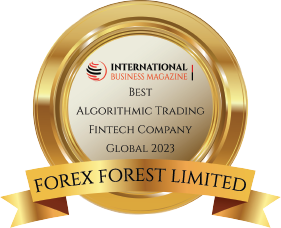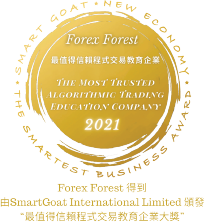

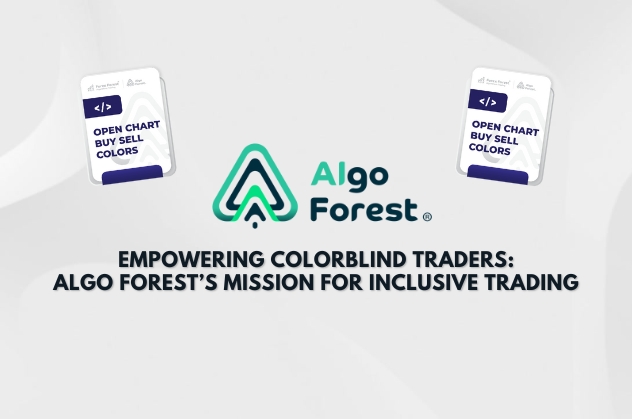
The Global Vision Care Market is expected to grow from $71.4 billion in 2022 to a projected $113.8 billion by 2032, growing at a 5% CAGR. This rising demand reflects a global trend: vision impairments—including color blindness—are becoming more common due to aging populations, increased screen exposure, and greater awareness. The fact is 350,000,000 people worldwide are color blind and that makes about the same amount as the entire population of the United States. It is so common that in 2025, every 1 in 12 men are color blind and 1 in 200 women are color blind.
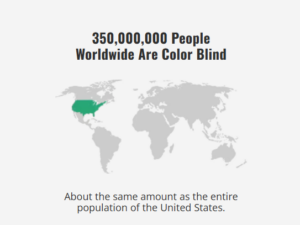
This trend reinforces the urgent need for inclusive solutions in fields like financial technology, where visibility and clarity can make or break decisions.
In most trading platforms, visual indicators rely heavily on color—often red for sell signals and green for buy signals. For colorblind traders, these distinctions can blur or disappear entirely.
Here’s a visual comparison:
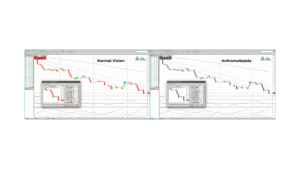
People with Achromatopsia see the world in black, white, and gray. This severely impacts their ability to distinguish between traditional trading signals, which are heavily reliant on color.
In fast-paced trading scenarios, this may result in:
This stark visual challenge highlights the urgency of customizable trading tools so all traders, regardless of their visual capacity, can operate with confidence.
Algo Forest’s “Open Chart Buy Sell Colors” script for the MT4 platform empowers traders by offering a customizable color scheme for buy/sell indicators. Developed with input from visually impaired users, it addresses color blindness in trading head-on.
Key Benefits:
This solution ensures that traders with color vision deficiency can make informed, accurate decisions without second-guessing visual cues.
This initiative goes far beyond a feature release—it's a reflection of our belief in inclusive innovation. Through our efforts, we aim to break down barriers in trading, ensuring that financial literacy and empowerment are available to all, regardless of physical ability.
We understand that equity in education and access to tools can help underserved communities reach their full potential. With proper design and inclusive support, every trader deserves the chance to thrive.
Ready to enhance your trading accessibility? Download the “Open Chart Buy Sell Colors” Script Today!
Help us shape a more inclusive future by sharing your feedback, spreading awareness, or collaborating on accessibility innovations.
Algo Forest stands firm: fairness, accessibility, and inclusion are non-negotiable. Through focused technical innovation and genuine social responsibility, we are proud to lead the way in creating a visually impaired-friendly trading environment that empowers every learner and investor.
Because when every trader can see clearly, everyone has the power to succeed.
Discover the CCY Power Indicator, your ultimate edge in identifying strong and weak currencies in real time.
Whether you're a beginner or a pro, this powerful tool simplifies decision-making and improves your performance when trading currencies and gold.
👉 Get CCY Power and start making informed trades today.
外汇小课堂:外汇交易如何运作︖了解外汇交易的基本原理 外汇交易作为全球交易量最大、流动性最高的金融市场之一,每天的交易总额高达 6.6 兆美元,吸引了无数投资者参与。然而,对于许多外汇新手来说,外汇到底是怎么运作的?是否真的如传说中那般高风险、难以掌握? 本文将带您逐步了解外汇市场的基本架构和操作方式,帮您扫清学习过程中的疑惑。不论您是初学者还是稍有经验的交易者,都可以从本文中获得实用的信息与策略。 外汇交易的基本原理是什麼︖ 外汇交易的核心是「以一种货币兑换另一种货币」,也就是所谓的「货币对」。例如 EUR/USD(欧元/美元)代表购买一欧元所需的美元数。 每种货币都有其标准缩写,例如 EUR 是欧元、USD 是美元。通过查看这些货币对的价格,交易者可以判断当前汇率,并作出买入或卖出的决策。 外汇价格由市场供需决定,全天候波动,因此也为交易者提供了众多机会。 📌 实用小贴士:可通过连接至权威外汇网站查看实时汇率。...
LEARN MORE >>MetaTrader 4 (MT4) and MetaTrader 5 (MT5) are two of the most popular trading platforms...
LEARN MORE >>The rise of artificial intelligence (AI) is reshaping forex trading, making automated trading smarter, faster,...
LEARN MORE >>

